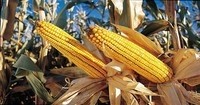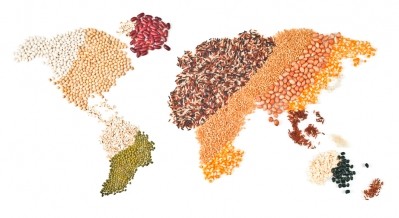US corn plantings may see boost for 2016/17 season, feed crop exports remain low

The US Department of Agriculture (USDA) said its 2016 grains and oilseeds outlook is informed by reduced prospects for producer returns as large global supplies and modest demand growth for all three crops keep downward pressure on prices.
The agency released its report at the Agricultural Outlook Forum in Virginia on 25 February.
“Prices for wheat, corn, and soybeans are all expected to fall in 2016/17,” said USDA officials in the report. Wheat is predicted to fall about $0.80 from the midpoint in 2015/16, corn by $0.15 and soybeans by 3%.
Wheat production is projected to decline on lower planted area, which is only partially offset by higher yields. Higher carryin stocks, however, raise expected supplies from 2015/16. Larger supplies are only partially offset by higher use, boosting ending stocks to the highest level in 29 years, said the agency.
Soybean planted area is projected to decline slightly from last year on lower expected prices and producer returns, predicted the USDA report.
However, corn plantings may be less affected, said officials, as reduction in the cost of production, including lower prices for fuel and fertilizer, are expected.
With higher production and larger beginning stocks, corn supplies are projected to be record high. Growth in usage is driven mostly by higher projected feed and residual use, largely reflecting expansion in the livestock sector, said the USDA.
“The combined planted area for the three crops is projected at 223.5m acres, down 1.8m from last year with wheat accounting for most of the decline,” wrote the USDA officials.
Wheat production is expected to drop about 3.6m acres, they said. But, it will be partially offset by higher yields from those acres.
“New-crop futures prices during the first half of February 2016 averaged just over $8.85 per bushel, down 8% from last year and down 21% from 2014,” they said. “Cash bids for fall delivery in Central Illinois during the first half of February 2016, at $8.52 per bushel, are sharply below new-crop bids in 2014 that soared to above $12 during spring planting and pushed soybean area to a record 83.3m acres.”
Imports, exports and use
Wheat growing conditions for 2016 have been mostly favorable, and the yield is expected to be 45.9 bushels an acre up from 43.6 during 2015, said officials.
“Domestic wheat use for 2016/17 is expected to increase 60m bushels year-to-year, mostly due to higher feed and residual use,” they said. “Wheat feed and residual use is projected at 200m bushels, up 50m bushels from the 2015/16 forecast supported by the rise in expected supplies and lower prices.”
Exports are projected to improve by about 75m bushels, but competition is expected to continue to limit market share, they said. Canada, Argentina and the European Union are all expected to have large crops.
“US wheat ending stocks for 2016/17 are projected to increase 2% to 989m bushels,” said officials. “These would be the highest stocks since 1987/88. The stocks-to-use ratio, at 47.3%, is down from the projected 2015/16 ratio of 49.3%, but above the 5-year average of 34.8%.”
Soybean supplies are anticipated up 3% from 2015/16 even with a fall in production amount from lower yields, said officials. Domestic use is set to increase about 1%.
“Crush is projected to expand by 20m bushels to 1,900m mainly due to higher domestic demand for soybean meal,” said officials. “With gains in pork and poultry production and lower soybean meal prices, domestic soybean meal use is projected up 2% at 34.2m short tons. Soybean meal prices for 2016/17 are projected to fall to a 10-year low at $280 per short ton, in part reflecting strong export competition from South America.”
US soybean meal exports are expected to remain about the same, with increased world use predominately covered by products from Argentina, they said.
“US soybean stocks for 2016/17 are projected at 440m bushels, down 10m from 2015/16,” they said. “With a 4% increase in total soybean disappearance, the ending stocks-to-use ratio would be 11.4%, down slightly from the 9-year high projected for 2015/16.”
Corn use is expected to improve from 2015/16 accounted for by higher feed and residual use, they said. “Corn feed and residual use for 2016/17 is projected at 5,425m bushels, up 125m bushels from the 2015/16 forecast,” they added.
Imports are thought to decline, but remain high, they said. Exports are expected to see a 50m bushel bump but continue to face challenges from South American production.

![[pic: (c) istock.com/Veresovich]](/var/wrbm_gb_food_pharma/storage/images/_aliases/wrbm_medium/1/7/6/2/1202671-1-eng-GB/USDA-raises-global-wheat-stocks.jpg)






